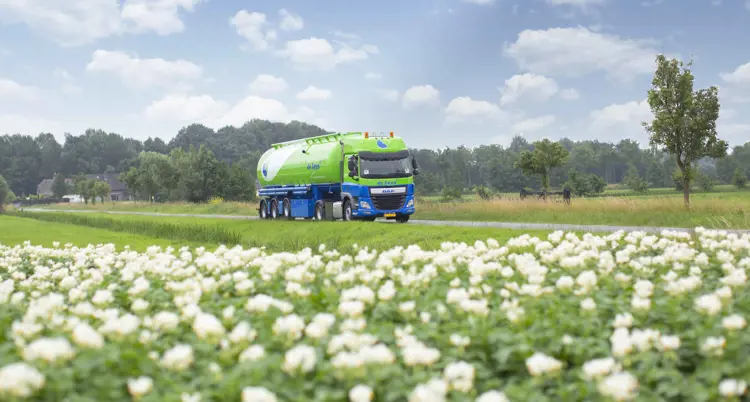Looking at the road ahead: De Heus' commitment to sustainable transport in The Netherlands
Every day, a fleet of 100 trucks hits the road to deliver animal feed from the Netherlands to customers across The Netherlands, Belgium, Denmark, Germany and the northern part of France. Traveling up to 100,000 kilometres annually, these heavy-duty vehicles are responsible for significant CO2 emissions which add to the footprint of our feed. Three logistics professionals from De Heus share their experiences with a more sustainable approach to truck transport.

Erik Dijk – Manager Transport & Logistics
“All business aspects play a part in making the organisation more robust and sustainable. In transport, we are taking steps to become more efficient, use fewer resources and reduce costs. For me, this starts with planning more efficiently.
Sustainable logistics is largely about planning optimal routes for our trucks. The shorter the distance travelled by each ton of feed the better. Our aim is to transport as much feed as possible in a single delivery. To do that, we need to consider two things. Firstly, the distance between the loading point and the farm must be as short as possible. Secondly, the truck must be of the right size to be able to access the farm. To make it even more efficient, we spread out loading times over the course of the day, so that drivers won’t be queuing at the factory. To make this all possible, we have to invest in the best technology and in the capacity of our trucks.”
Our global sustainability approach
Plan more efficiently to move more feed
Frans van de Stroet – Head of vehicle fleet
“In my opinion, we can make the biggest difference by making drivers more aware. Small changes in their driving style can have a significant impact on the use of fuel and CO2 emissions. A good driver is not some one who goes from point A to point B as fast as possible, but who optimally uses all the techniques they have available to them. That includes fuel economy and using the right technology, but also efficient loading and unloading.
When we introduced our training, some drivers were hesitant and others even rather sceptical – they were convinced we would be much slower. Fortunately, we now know that’s not the case, and so do they! Not only are they just as fast, but they drive in a relaxed, conscious way. I enjoy seeing the reactions from drivers once they realise that they rarely need to use their brakes anymore, or that they’re suddenly saving 15 percent fuel during a shift.”
Training for optimal deliveries
Herman Boer – Truck driver
“In a nutshell, what De Heus’ training comes down to is looking ahead as much as possible. The better you can anticipate, the more it affects your entire way of driving. Knowing when to accelerate, roll out and brake efficiently, that’s where you can really save fuel. What I thought was especially interesting, was that the more cautious drivers did worse in the training sessions – they were too focused on the brakes.
I appreciate De Heus organising this for us. When I realised I was part of De Heus’ bigger challenge to save fuel and reduce emissions, a more sustainable approach to driving started to make sense to me. So as one of De Heus’ drivers, I see it as my personal objective to help achieve this goal.”
Anticipating is everything
FEED. Magazine
In this magazine, we share a selection of stories about progress and sustainability from De Heus business units all over the world. We hope that these stories will inspire you








